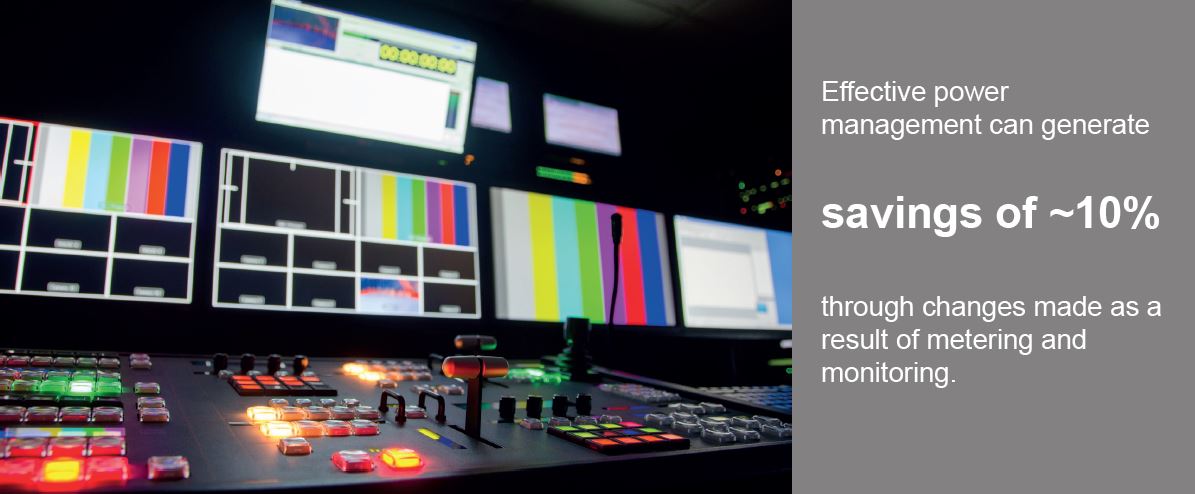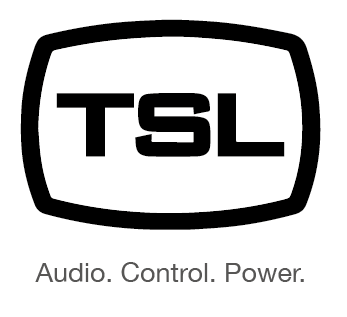Facility Wide Power Management - Intelligent Management and Control for Broadcast
Any facility that has rack-mounted equipment, be it a TV station, IT/Data Centre, Hospital or Oil Rig, can benefit from implementing an effective Power Management system. Save time, energy and power for your rack-mounted equipment with TSL Products’ Power Manager series.
Data is a crucial part of life in the 21st century. We expect it to be at our fingertips in an instant, and we have all felt the frustration of having to wait what seems like a lifetime (20 whole seconds!) for files to load or email to sync; we greet the ‘spinning wheel of doom’ with dismay bordering on despair. In many circumstances though, delays and breakdowns really are unacceptable. Hospital computer systems, banking systems, TV broadcasts and many other situations have to have failsafe solutions behind them to avoid disastrous loss of data or services.
Data centre infrastructure management (DCIM) systems have to keep up with the ever-increasing amount of data being created, searched, retrieved and archived. Fortunately, the hardware and software technology behind them is being developed constantly to improve reliability, increase automation and reduce power consumption.
Application
Broadcasters may have their servers sitting in a basement, or even in multiple remote locations. They need to monitor power usage and understand when there is a problem, without having expensive engineers sitting there waiting for an issue to arise. With a DCIM system, an alarm will trigger if a machine starts taking too much or too little power, or hangs in operation, or the environment temperature has exceeded limits or the input voltage has dropped below safe minimums or risen to dangerous highs. An engineer can then diagnose the issue remotely and immediately invoke back up plans to resolve the problem while the issue is fixed, without a break in service.
Broadcast is where TSL Products started with our hardware power management units, but we have also seen increasing demand for DCIM systems where IT is outsourced, such as businesses, schools and hospitals. The IT department needs to be able to see what’s happening but isn’t necessarily located on-site. A DCIM system enables the IT team to diagnose and often solve an issue remotely, saving time and money on engineers driving back and forth.
Different sectors have different requirements, and customer feedback is crucial to help developers tweak solutions and solve problems. For example, our broadcast PDUs (power distribution units) are horizontal, since engineers like to walk through the racks and see that the green lights are on, indicating everything is OK. However, while the IT world likes the proven reliability of the units, it prefers its PDUs out of sight, standing up at the back of the racks. So, we created vertical PDUs to address this demand.
Conversely, as broadcast becomes more IT-centric, broadcasters want to use the products they’ve seen used in IT! The key thing though is that the vertical units do exactly the same thing as the horizontal units; both versions are absolutely reliable and based on years of experience, which is essential as they keep everything else running smoothly.
Power consumption is a key factor in data centres. In countries like the UK, where power is steady and reliable, the issue is to reduce consumption as far as possible for ecological and financial reasons. In emerging countries like India, power is expensive and can be erratic in its availability. Recently, an Indian broadcaster customer asked us for a solution to his specific problem; he would often receive a call from the power grid asking him to cut the power consumption by 50%. He knew which elements he could switch off, but couldn’t do it manually every time there was a power issue, so we worked with him to create some presets; at the touch of a button he could switch off only those servers used for channels that were not on-air, or equipment in a studio not in use. A lot of power is wasted in broadcast facilities because items like speakers and consoles are permanently switched on. By building in preset options, as requested by this single customer, we can now offer all our customers the opportunity to save power and money.
DCIM software enables providers to offer not just power management, but complete data centre monitoring and control. For example, our DCIM software InSite speaks to all third party PDUs and devices for monitoring and regulation of temperature, humidity, water ingress, air conditioning systems and much more besides. Through a simple GUI, users can see the condition of the racks, visualise the temperature with colour bars, and have complete visibility and control – from miles away. This kind of software enables users to improve efficiency by monitoring and modifying usage. For instance, at the end of the school day there is a huge leap in demand for power when the children get home and switch on the TV or computer, so the AC needs to be higher in rack rooms. Then later in the evening it can be regulated to a lower usage.
Equally, companies with co-located data centres can accurately measure the power used by third parties who share the space. Each section can be monitored and controlled individually by each third party, while the overall owner/manager can see the entire system, alert customers to issues, and provide accurate billing.
DCIM solutions provide three key benefits, for both broadcast and IT users. If there is a problem, you will know about it before your customers tell you; it eliminates the need to deploy expensive engineers across the whole network; and it enables users to make significant savings in power consumption, where facilities are not in use all the time. It’s something to consider, next time you are watching the spinning wheel of doom.


